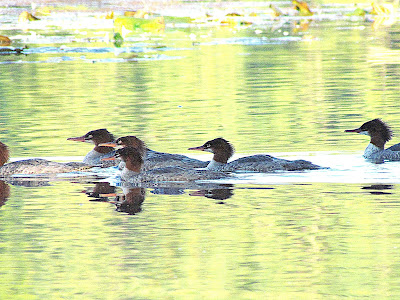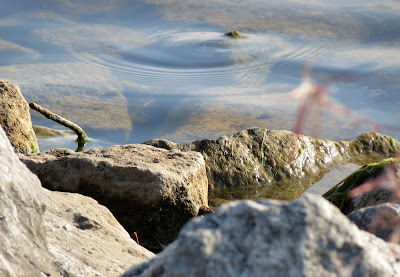A Three Heron Day
31 August 2013
I had agreed to do a weekly dawn count of the Great Egrets Ardea alba roosting on the Speed River at the area known as the Hespeler Mill Pond, so at 05:29 I was in position to wait for sunup. As soon as there was even a hint of light I could see the egrets lined up, looking for all the world like a white picket fence sticking out of the water. In all, there were twenty-one birds roosting there, resembling stoic sentinels of the night.
As it got lighter they started to fidget, preen, flap their wings, move around and squabble a little. Many flew off to the east and by the time I left at 07:00 only five birds remained, along with several Great Blue Herons Ardea herodias.
Later in the morning I stopped by Laurel Creek and found the Great Blue Heron shown below.
A Green Heron Butorides virescens has been frequenting the area for the past couple of weeks but it was nowhere to be seen this morning.
It was quite heavily overcast and the following scene looked especially serene on a grey day.
A juvenile Pied-billed Grebe Podilymbus podiceps was sticking close to one of its parents.
And a juvenile Cedar Waxwing Bombycilla cedrorum was perfecting its flycatching skills.
I moved on to the little wetland on Beaver Creek Road mentioned in an earlier post. This tiny area, barely an acre I would guess, has been incredibly productive of late and today was no exception. It is surrounded by houses on three sides and by the road on the fourth and as can be seen from the photographs below is densely vegetated. This makes it difficult at times to get a decent shot of the birds since the camera constantly tries to focus on intervening leaves or branches.
I was absolutely surprised to see two Great Egrets feeding in the marsh. It appears to be a bumper year for frogs no doubt making the location attractive for all species of heron
Earlier in the week I had seen two immature Black-crowned Night Herons Nycticorax nycticorax roosting in the wetland; today an adult bird was present.
Two nights ago we were able to watch a Sora Pozana carolina at Laurel Creek for about ten minutes, so it has been a productive week at the wetlands, truly one of my favourite habitats.
























.JPG)















































.jpg)
